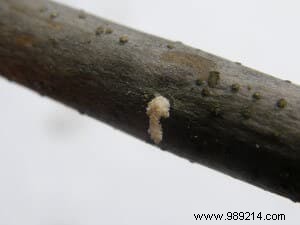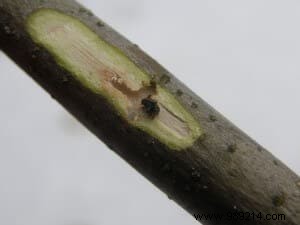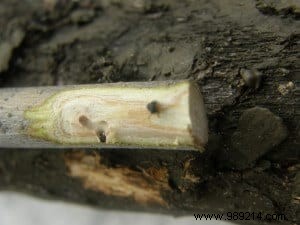The winter caused some damage to the olive trees. Some won't recover. And other weakened trees are subject to attack by a bark beetle called the olive neiroun (phlaeotritus beetles). The attack can also occur during the transplantation of an olive tree, the latter supporting stress and therefore weakening.
We notice on the branches and trunks affected by the Neiroun of the olive tree, small piles of white sawdust. By cutting the bark appears a small gallery and one or more tiny little black insects. The Neiroun is a xylophagous insect, measures 2 to 3 minutes long and has two antennae ending in a small palm. The larva is a small white worm. The Neiroun does not directly cause the death of the olive tree, but reduces the natural resistance of the tree. It settles in sick, weak branches, especially those that have suffered a frost or a lack of water. Indeed, very dry winters also weaken olive trees.
Once the damage is observed, the sanction is immediate. Cut affected branches (or even the trunk) and fire! We should also burn all the branches remaining on the ground after the annual pruning. The Neiroun can very well take up residence in the branches left on the ground. An application of nitrogen fertilizer helps the tree start again. If the tree has suffered a period of drought, the water supply is around 50 minutes twice a month! This represents 50 liters of water per m². And that under the entire crown of the tree.
There are no approved products to fight against this parasite, just pruners, a saw and a matchbox. Forward this info to gardeners who have one or more olive trees in their garden.

small pile of sawdust on weakened branch

Here is this "nice" little black insect... and his gallery
